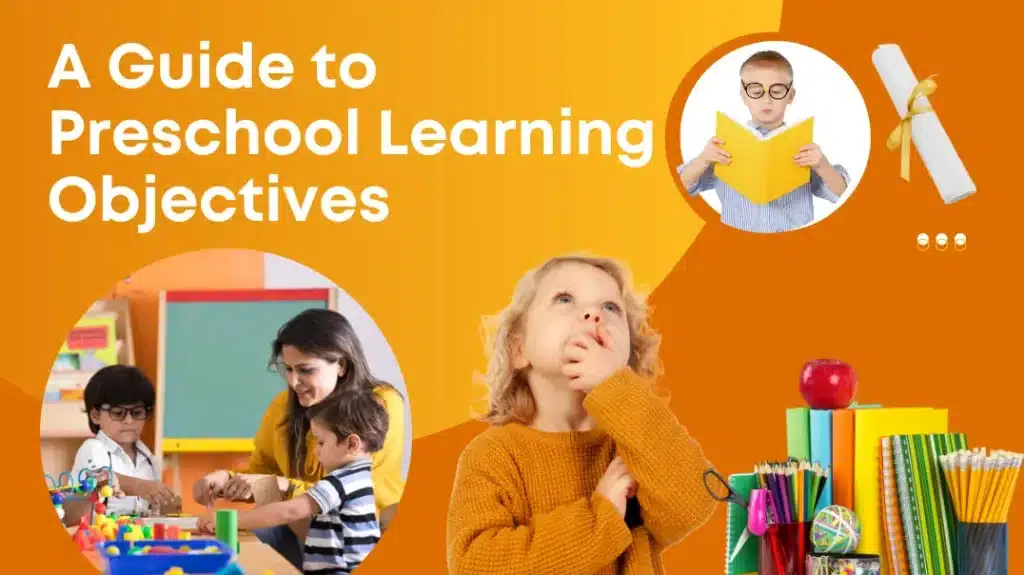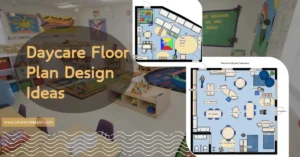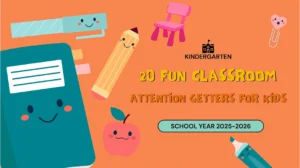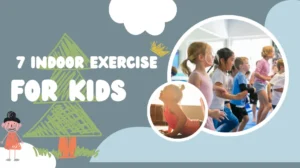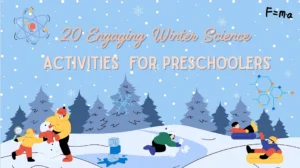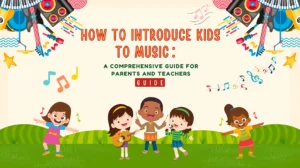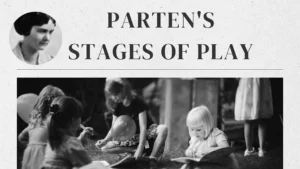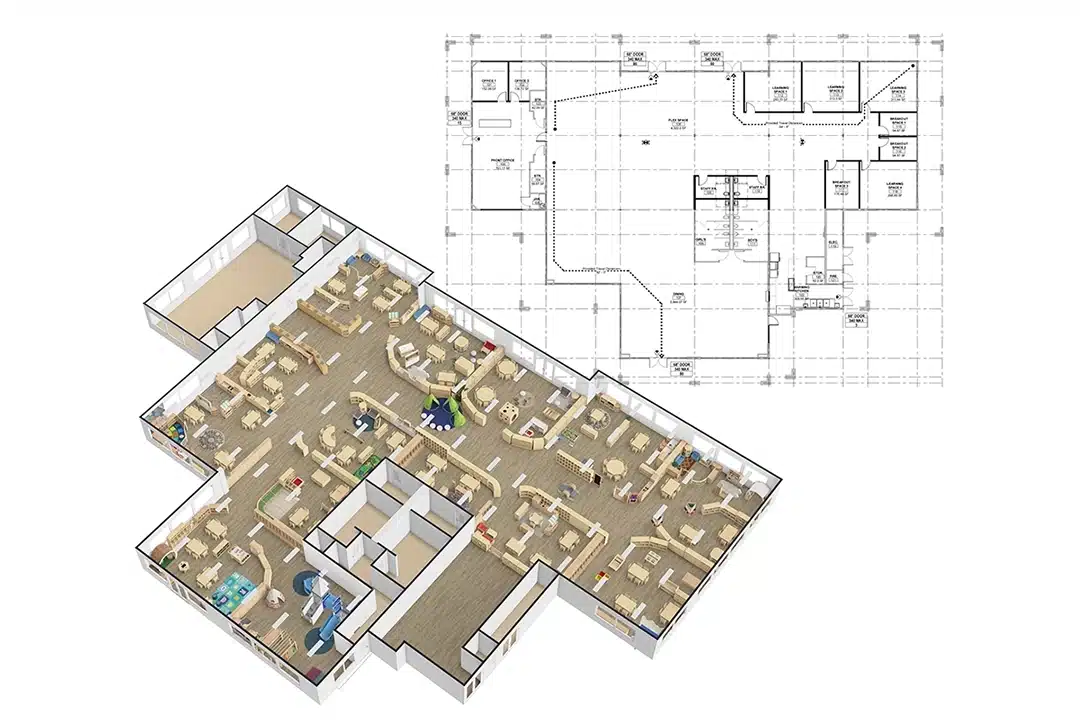Are your classrooms aligned with the right Preschool Learning Objectives? Do your teachers understand what skills children must develop before entering primary school? Are you confident that your learning outcomes match preschoolers’ cognitive, emotional, and physical needs today?
Preschool Learning Objectives are essential benchmarks that guide what children should achieve during their early years. These goals cover critical areas such as social behavior, problem-solving, language development, and motor skills. A clear roadmap helps educators design meaningful activities while giving parents confidence in learning.
Without well-structured Preschool Learning Objectives, even the most beautiful classroom or expensive materials can fail to support true development. Let’s explore what your preschool curriculum should focus on.
Introduction to Preschool Learning Objectives
Early childhood marks a period of incredible growth. From learning to speak in complete sentences to grasping the concept of sharing, every day is a learning opportunity. This is where preschool learning objectives come into play. They act as a roadmap, helping educators and parents guide young learners through foundational skills that prepare them for kindergarten and lifelong success.
Preschool isn’t just where children spend time while their parents work. It’s a structured environment where critical developmental milestones are introduced, nurtured, and assessed. Establishing clear, developmentally appropriate learning objectives ensures every child receives support tailored to their needs, abilities, and pace of learning.
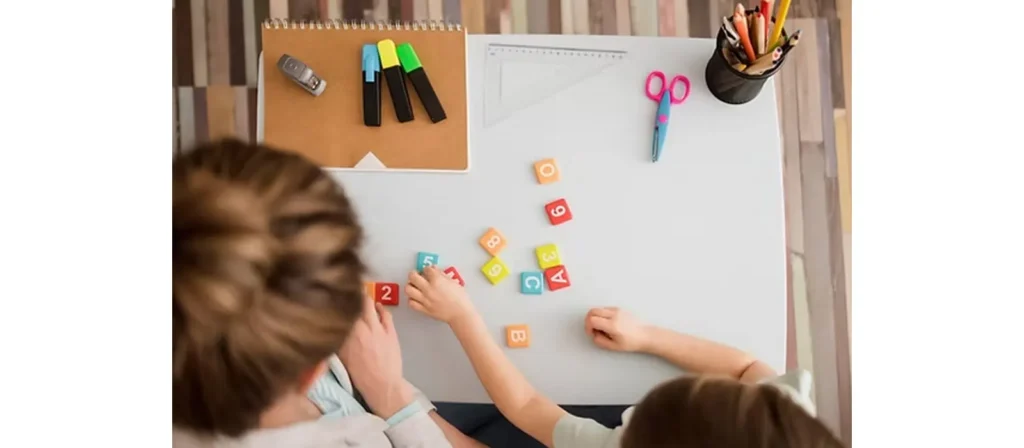
What Are Preschool Learning Objectives?
Preschool learning objectives are the specific skills, behaviors, and knowledge areas children are expected to develop during their early educational experience. These objectives cover cognitive, physical, social-emotional, and language development domains.
They help educators plan lessons, assess progress, and communicate effectively with parents. These objectives also foster an environment of purpose where learning activities are intentional and child-centered.
Well-crafted learning objectives are:
- Specific: Clearly define the skill or behavior to be learned.
- Measurable: Allow for observable and trackable progress.
- Developmentally Appropriate: Match the child’s age and stage.
- Flexible: Adapt to individual differences.
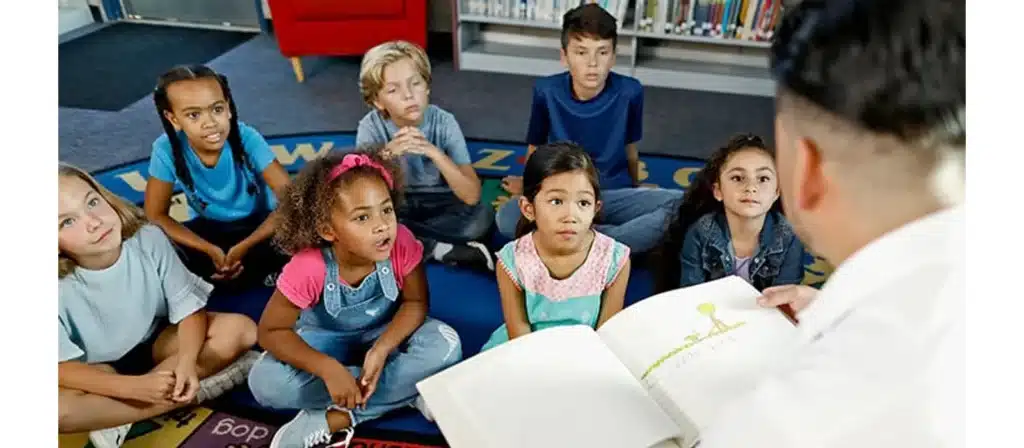
Importance of Preschool Learning Objectives
Well-defined Preschool Learning Objectives serve many functions in early childhood education. They are not just theoretical—they are practical tools that make teaching more focused and learning more meaningful. The specific benefits of preschool learning objectives are as follows:
1. Guide Instruction
Preschool learning objectives help teachers deliver intentional and targeted instruction. Instead of random activities, lessons are designed to meet specific developmental and academic benchmarks. Teachers can evaluate each child’s abilities and plan activities that align with their current stage, ensuring that all children are supported and challenged appropriately.
Structured objectives also prevent aimless teaching. Rather than planning activities based solely on availability or routine, educators create lesson plans that align with state or national standards. The result is more coherent, meaningful learning experiences that build toward clear goals.
2. Support Development
Learning objectives in preschool play a key role in supporting a child’s development. These aren’t just about academic achievement—they include objectives related to emotional well-being, motor skills, language acquisition, and social interaction.
For example, objectives may include learning to share toys, follow multi-step directions, or express frustration using words. These are skills that contribute to school readiness and long-term personal success. By explicitly targeting these areas, educators help children become well-rounded individuals capable of navigating academic and social environments.
3. Personalize Learning
Every child is unique, and preschool learning objectives allow teachers to personalize instruction accordingly. For example, a child who struggles with fine motor skills might receive more activities involving puzzles or drawing, or a child excelling in language might be introduced to early reading.
Personalization ensures that all children—regardless of their starting point—can progress. It also builds confidence, motivation, and a sense of achievement, all of which are critical during preschool.
4. Create Daily Plans
Well-crafted preschool learning objectives provide a solid framework for day-to-day classroom planning. Teachers can use them to develop structured schedules with diverse activities targeting multiple developmental domains. Whether it’s story time, outdoor play, or a hands-on science experiment, each activity has a clear purpose rooted in an objective.
This daily structure fosters a balanced learning environment, ensuring no development aspect is neglected. It also promotes routine, essential for preschoolers’ sense of security and understanding of time.
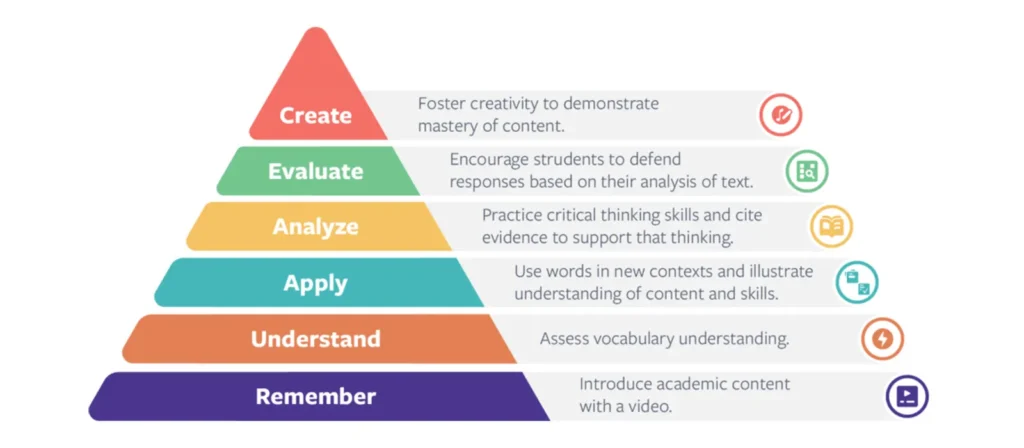
BLOOM Taxonomy
Bloom’s Taxonomy is an educational framework developed by Benjamin Bloom that categorizes learning into six hierarchical levels of cognitive complexity. Originally designed for older students, the taxonomy has been adapted to suit early childhood education, including preschool. It helps educators write developmentally appropriate learning objectives promoting lower- and higher-order thinking skills.
The six levels of Bloom’s Taxonomy, in increasing order of complexity, are:
- Remembering – Recognizing or recalling facts and concepts
- Understanding – Explaining ideas or concepts
- Applying – Using knowledge in new situations
- Analyzing – Breaking down information into parts
- Evaluating – Making judgments based on criteria
- Creating – Producing new or original work
Educators typically focus on the first three levels—remembering, understanding, and applying—for preschoolers because children at this stage primarily develop foundational cognitive abilities.
Examples of Bloom-Based Preschool Objectives:
- Remembering: “Children will identify primary colors.”
- Understanding: “Children will describe the sequence of a daily routine using visual cards.”
- Applying: “Children will use counting blocks to match numbers from 1 to 10.”
Integrating Bloom’s Taxonomy into preschool learning objectives ensures that children absorb information and begin to use and manipulate it in practical ways. It creates a structure for progression, so as children grow, their thinking deepens and becomes more flexible.
Additionally, teachers can use the taxonomy to diversify instruction. For example, one child might be working on recalling numbers while another applies counting skills to solve simple puzzles. This range of complexity fosters individualized learning within a shared classroom environment.
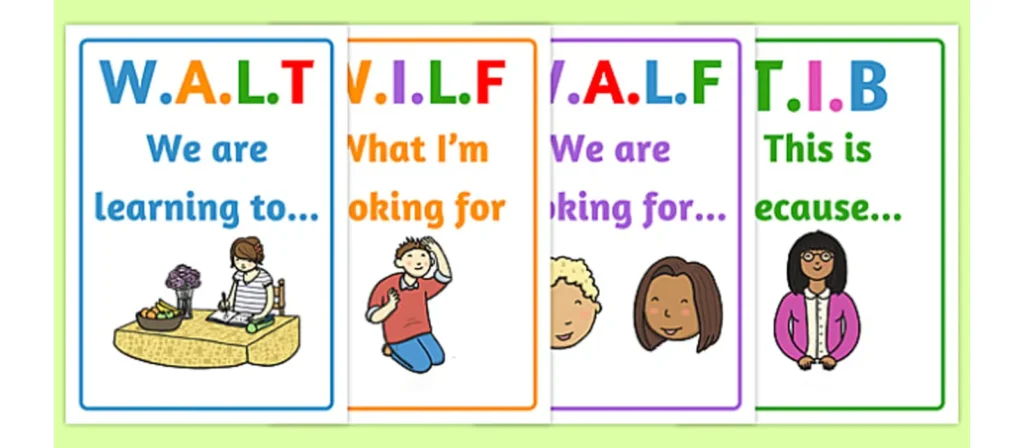
Preschool Learning Objectives in Different Subject Areas
Preschool education is built around the understanding that young children learn best through holistic, integrated experiences. Learning objectives, therefore, must address multiple developmental domains—each critical in its own right. The goal is not merely academic readiness but to nurture well-rounded individuals capable of thinking, feeling, moving, and interacting healthily and competently.
Cognitive Development
Cognitive objectives center on how children think, explore, and figure things out. These goals help foster mental skills such as memory, reasoning, problem-solving, and decision-making.
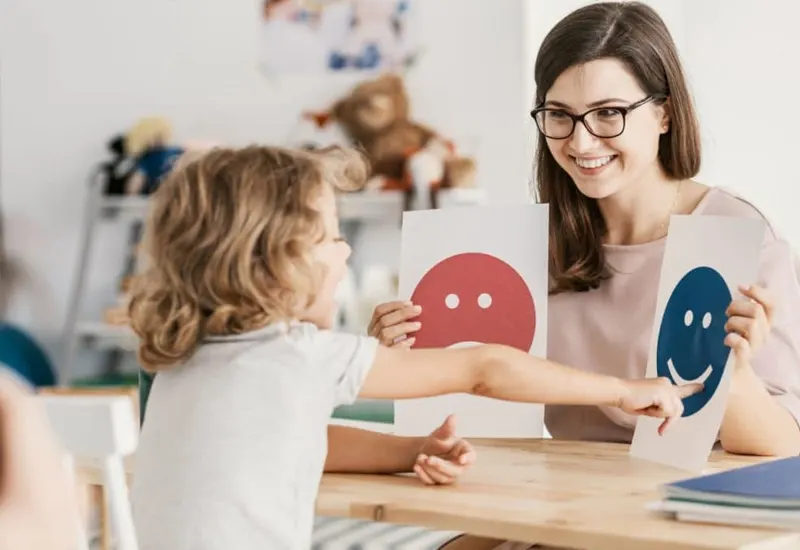
Key objectives include:
- Pattern Recognition: Children recognize, continue, and create patterns using colored blocks or drawings. This supports mathematical thinking.
- Object Classification: Sorting objects by size, color, or function develops organizational and comparison skills.
- Memory Skills: Recall games, such as memory cards or repeating a list of items, build retention and concentration.
- Cause-and-Effect Understanding: Activities like building towers and knocking them down help children understand the consequences of actions.
- Sequencing: Using picture cards (like daily routines) to put events in order strengthens logical thinking.
- Symbolic Thought: Using one object to represent another in play (e.g., a stick as a sword) supports abstract thinking and literacy readiness.
Teaching Strategies:
- Use sorting trays, pattern blocks, and categorization games
- Read stories with frequent pauses for questions
- Introduce sequencing cards and memory games
- Encourage open-ended questions during the exploration
Social-Emotional Development
Social-emotional objectives are foundational to lifelong success. They address a child’s ability to understand and regulate their emotions, build relationships, and develop a positive self-image.
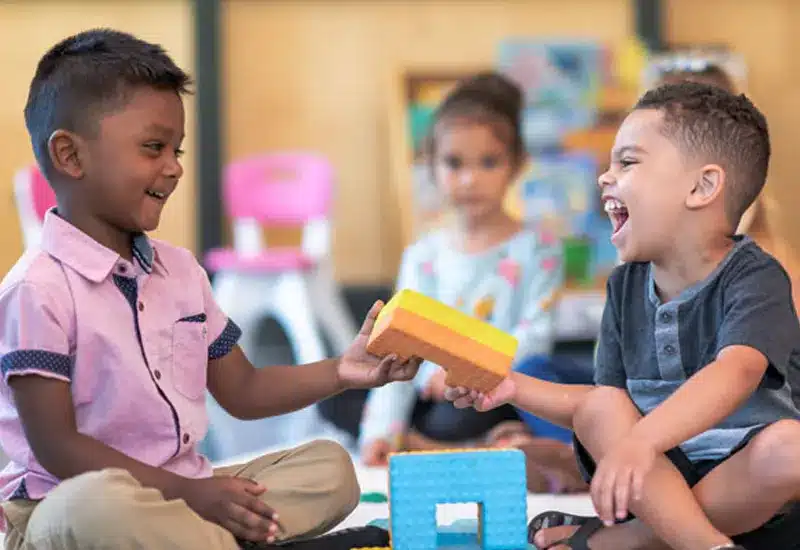
Social-Emotional Development
Social-emotional objectives are foundational to lifelong success. They address a child’s ability to understand and regulate their emotions, build relationships, and develop a positive self-image.
Core objectives:
- Emotion Identification and Expression: Children learn to name emotions (happy, sad, angry) and express them using words rather than actions.
- Self-Regulation: Learning to wait for a turn, cope with frustration, or ask for help builds impulse control.
- Empathy Development: Activities like role-playing help children understand others’ feelings.
- Conflict Resolution: Guided by teachers, children use words like “I feel…” and “Can I have a turn?” to solve disagreements peacefully.
- Sense of Self: Children develop confidence in their abilities through independent tasks and positive reinforcement.
- Relationship Building: Collaborative games and group work teach cooperation and trust.
Teaching Strategies:
- Implement daily check-in routines for emotional awareness
- Use puppets or picture books to model social scenarios
- Facilitate group projects and collaborative games
- Incorporate classroom jobs to build responsibility
Physical Development
Physical development is divided into gross motor (large muscle) and fine motor (small muscle) objectives.
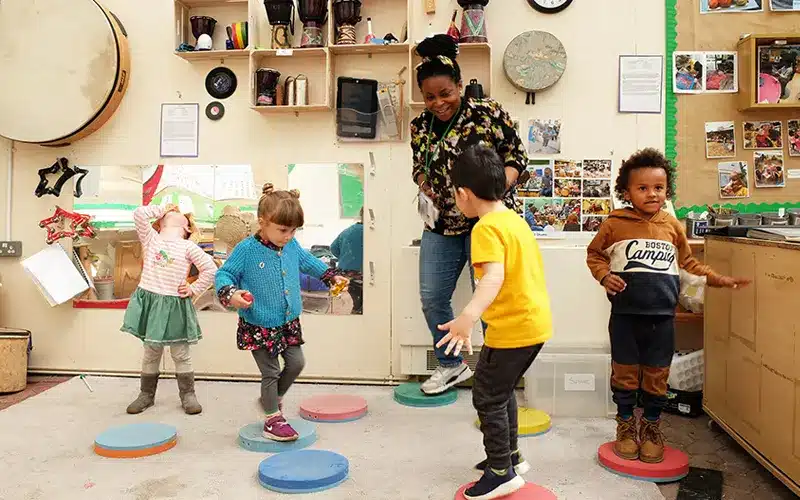
Gross Motor Objectives:
- Locomotion Skills: Running, hopping, skipping, and climbing strengthen core muscles and coordination.
- Balance and Stability: Walking on a balance beam or hopping on one foot refines body control.
- Body Awareness: Activities like yoga or dance promote spatial awareness and movement accuracy.
Fine Motor Objectives:
- Hand-Eye Coordination: Threading beads or playing with tweezers supports precise hand control.
- Grip Strength: Holding crayons, paintbrushes, or scissors prepares children for writing.
- Tool Use: Using glue sticks, tape, and utensils properly develops autonomy and dexterity.
Teaching Strategies:
- Schedule daily outdoor play and motor activities
- Use finger painting, lacing cards, and kinetic sand
- Organize obstacle courses and movement games
- Encourage self-care tasks like dressing and feeding
Language Development
Language development is critical because it forms the basis for all learning and communication. Children rapidly acquire vocabulary and learn the rules of conversation at this stage.
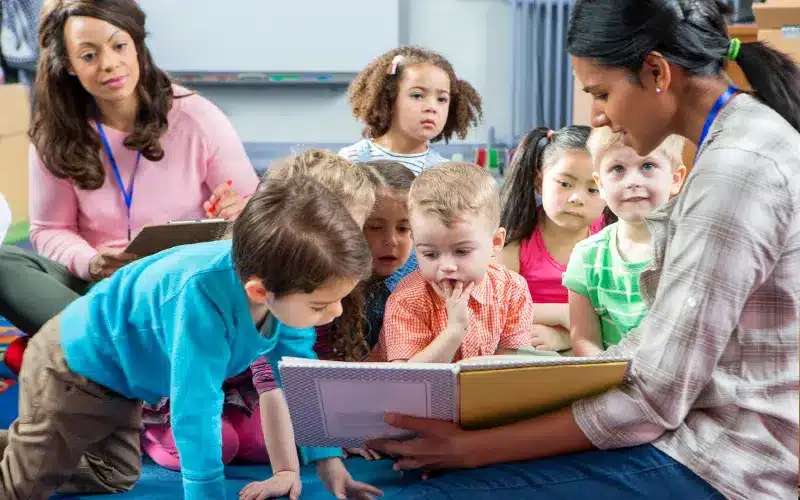
Key goals include:
- Listening Comprehension: Children follow multi-step directions and understand narratives.
- Vocabulary Expansion: Exposure to rich language through stories, songs, and conversation builds word knowledge.
- Conversational Skills: Turn-taking in dialogue, responding to questions, and staying on topic foster social communication.
- Expressive Language: Using full sentences, descriptive words, and complex ideas to express thoughts.
- Question Formation: Asking “how” and “why” questions deepen curiosity and critical thinking.
- Story Retelling: Recounting events in sequence strengthens memory and narrative structure.
Teaching Strategies:
- Incorporate show-and-tell, story-retelling, and songs
- Use thematic vocabulary activities and visual aids
- Encourage turn-taking in conversations
- Model rich language in everyday routines
Literacy Development
Language development is critical because it forms the basis for all learning and communication. Children rapidly acquire vocabulary and learn the rules of conversation at this stage.
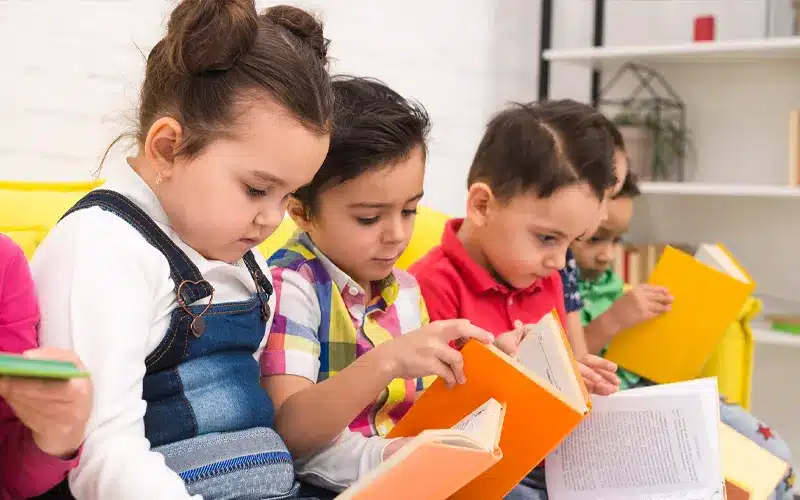
Essential outcomes:
- Letter Recognition: Identifying upper and lowercase letters in names, signs, and books.
- Phonemic Awareness: Recognizing sounds in spoken words (e.g., “cat” starts with /k/).
- Rhyming and Alliteration: Enjoying wordplay through rhymes and tongue twisters improves auditory discrimination.
- Print Awareness: Understanding that print is meaningful and can be read from left to right, top to bottom.
- Name Writing: Attempting to write one’s name using correct letter formation.
- Story Engagement: Responding to questions, predicting outcomes, and discussing characters.
Teaching Strategies:
- Provide access to a print-rich environment
- Use alphabet puzzles, tracing sheets, and phonics games
- Conduct shared reading and storytelling
- Encourage journaling and drawing with labels
Mathematical Development
Mathematics in preschool is about understanding number concepts, patterns, and spatial relationships. It also fosters critical thinking and problem-solving skills.
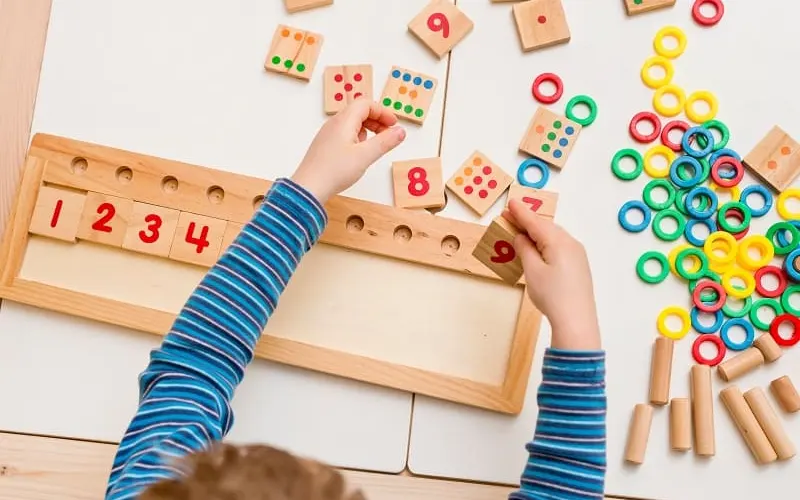
Key objectives include:
- Counting and Cardinality: Counting objects with one-to-one correspondence, understanding that the last number counted represents quantity.
- Numeral Identification: Recognizing and naming numbers 0–10 or beyond.
- Basic Operations: Using real objects to model addition (“2 blocks plus 1 more”) and subtraction.
- Measurement Concepts: Comparing lengths, weights, and volumes using everyday items.
- Geometry: Identifying shapes in the environment and building structures with blocks.
- Patterning: Creating, extending, and describing patterns using beads, colors, or movements.
- Sorting and Classifying: Grouping items by multiple attributes.
Teaching Strategies:
- Use counting songs, number games, and manipulatives
- Introduce math centers with thematic tools (e.g., grocery store setup)
- Engage in daily calendar and weather chart routines
- Encourage real-world math through snack time and cleanup
Science Development
Science introduces children to the world around them. It nurtures curiosity, observation, experimentation, and basic reasoning.
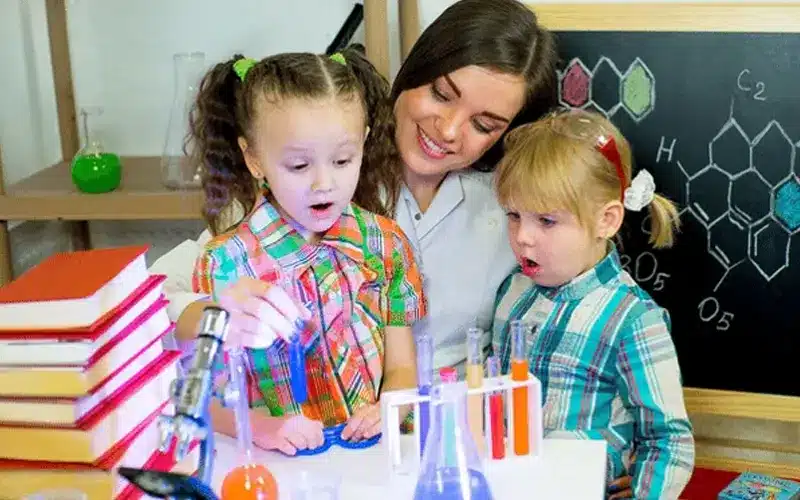
Objectives include:
- Sensory Exploration: Investigating materials using sight, sound, smell, touch, and taste.
- Nature Observation: Noticing weather changes, plant growth, and animal behaviors.
- Life Cycles: Exploring the stages of plant or insect life (e.g., seed to flower, caterpillar to butterfly).
- Basic Experiments: Asking questions, predicting outcomes, and observing results (e.g., “What happens when we mix colors?”).
- Environmental Awareness: Learning about recycling, ecosystems, and conservation.
- Using Scientific Tools: Examining properties by magnifying glasses, measuring cups, and balancing.
Teaching Strategies:
- Create science discovery areas with magnifiers, rocks, leaves, and natural elements
- Conduct safe, guided experiments with everyday materials
- Maintain class pets or plants for observation
- Integrate science into themes like “Life Cycles” or “The Five Senses”
Art Development
Art objectives emphasize creativity, sensory exploration, and personal expression. Through artistic experiences, preschoolers develop both skills and confidence.
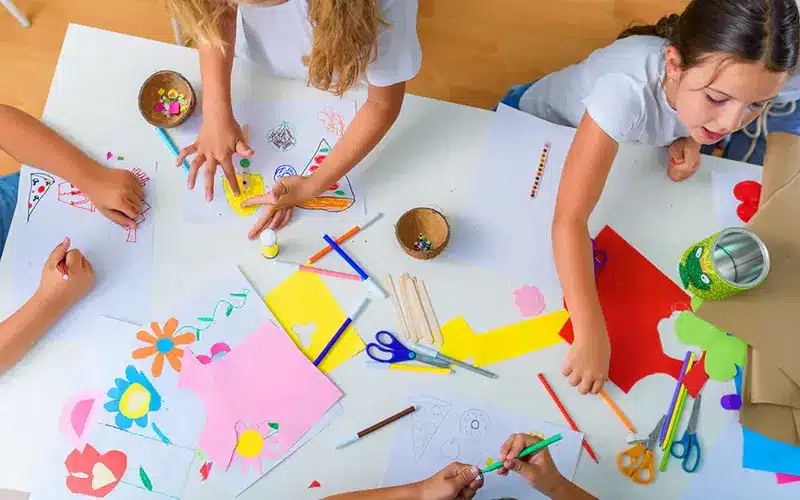
Goals include:
- Exploring Mediums: Using paint, clay, collage materials, and digital tools to create.
- Process Over Product: Focusing on the act of creation rather than the final piece.
- Symbolic Representation: Drawing people, places, or experiences with increasing detail.
- Self-Expression: Expressing emotions and ideas visually.
- Appreciation of Art: Observing and discussing the art of peers or famous artists.
Teaching Strategies:
- Provide open-ended art materials (markers, watercolors, collage supplies)
- Avoid over-structuring—encourage creativity rather than perfection
- Display children’s artwork prominently to build pride
- Integrate art with storytelling, science, or music
Creative Development
Creativity includes imaginative play, storytelling, music, and dance. It fuels emotional development, language, and cognitive flexibility.
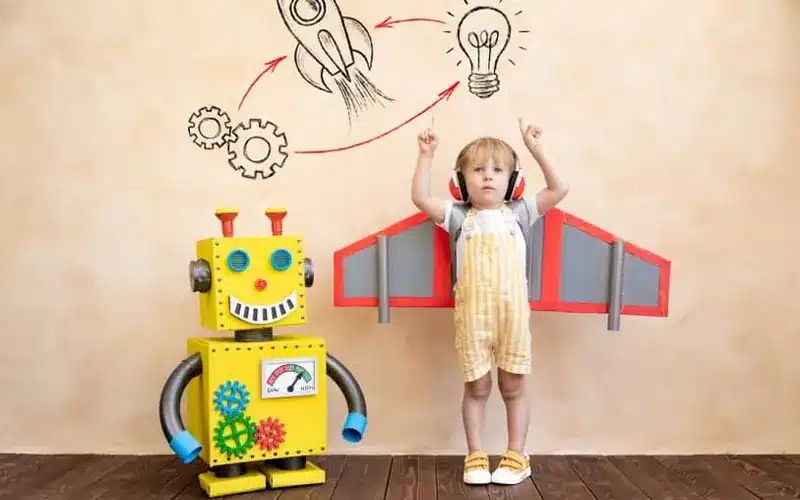
Objectives include:
- Pretend Play: Acting out roles in a play kitchen, doctor’s office, or space station.
- Inventive Storytelling: Making up stories during free play or group circle time.
- Open-Ended Exploration: Using unconventional materials (e.g., boxes, leaves) for building and designing.
- Dramatic Arts: Participating in group performances, puppet shows, or character impersonation.
- Musical Creativity: Making up songs or rhythms using classroom instruments.
Teaching Strategies:
- Provide a dramatic play area with costumes and role-play props
- Incorporate instruments and rhythm sticks in music time
- Use story dice or puppets for storytelling sessions
- Encourage daily free play sessions with imaginative tools
Personal Care and Hygiene
Self-care is part of building independence. Children should gradually learn to manage their hygiene and belongings.
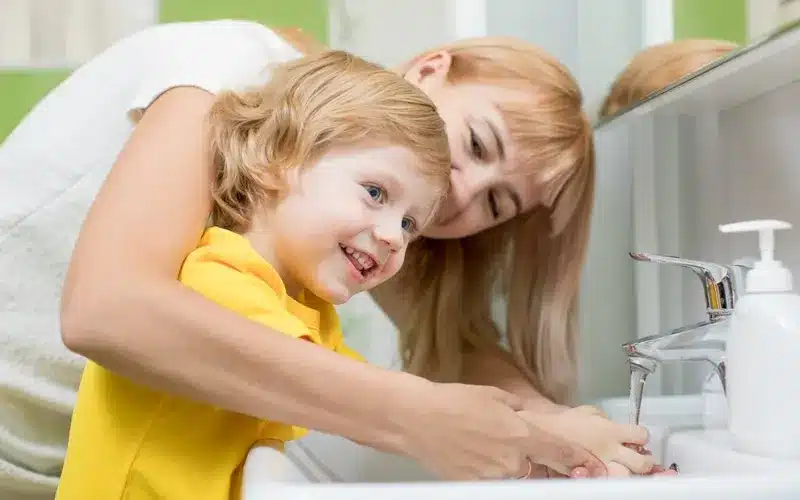
Key objectives:
- Handwashing Routines: Proper technique and timing (after using the bathroom, before meals).
- Tooth Brushing Education: Using models or storybooks to teach brushing and dental health.
- Dressing Skills: Zipping, buttoning, putting on shoes and coats independently.
- Nutrition Awareness: Learning about healthy foods and making balanced snack choices.
- Rest and Safety Practices: Recognizing signs of fatigue and following safety rules indoors and outdoors.
Teaching Strategies:
- Reinforce routines through songs, visuals, and social stories
- Create “hygiene stations” with visual cues
- Incorporate self-care into daily checklists
- Use real-life modeling and repetition
English Learners
Children whose first language is not English require specific objectives to build confidence and communication skills in a new language.
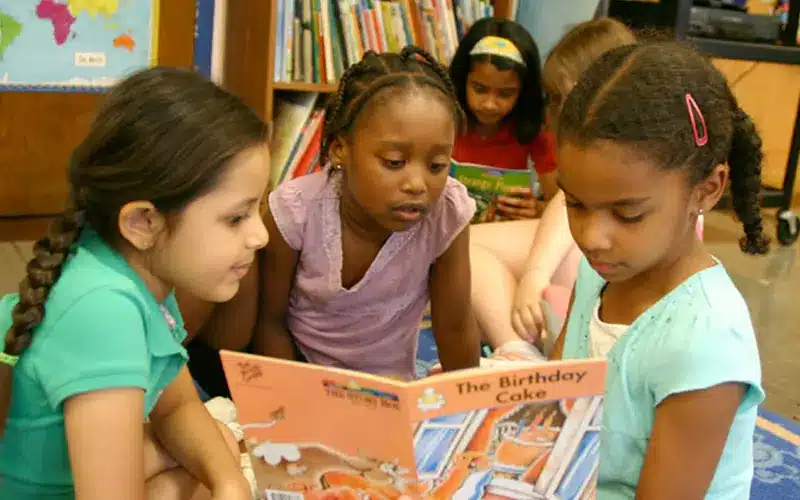
Key outcomes:
- Basic Vocabulary Mastery: Learning words for body parts, colors, objects, and actions.
- Functional Language Use: Expressing needs like “I’m thirsty” or “Can I play?”
- Visual and Physical Cues: Using gestures and visuals to support comprehension.
- Participation in Group Activities: Joining songs, dances, and stories with peers.
- Dual Language Support: Encouragement to use home language and English for comprehension and identity development.
Teaching Strategies:
- Pair English learners with language-rich peers
- Use visuals, gestures, and bilingual books
- Encourage code-switching as a bridge between languages
- Foster respect for all home languages and cultural backgrounds
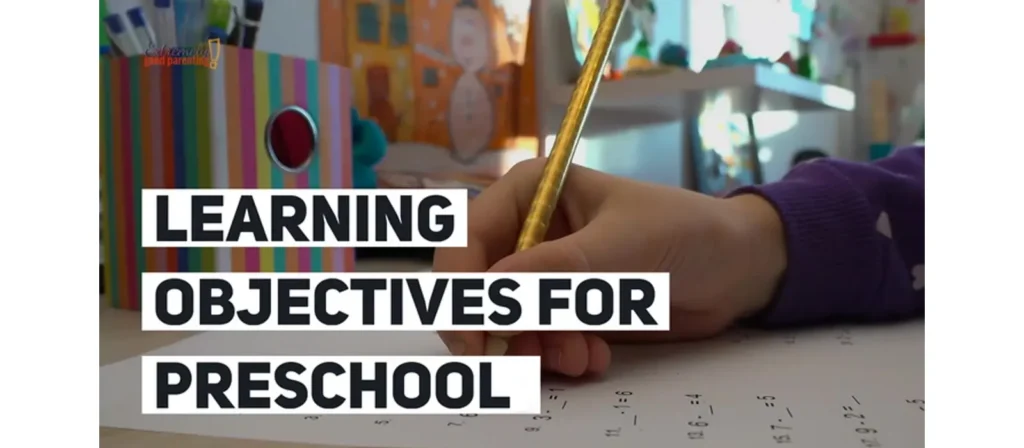
How to Write Effective Preschool Learning Objectives?
Writing strong preschool learning objectives requires clarity, specificity, and developmental awareness. Unlike general goals, objectives must be measurable, observable, and directly linked to a child’s actions or skills. Here’s how to craft them effectively:
1. Start with the Child as the Subject
Every objective should clearly state who is performing the behavior. In preschool, this is almost always “the child” or “the student.”
Example: The child will identify primary colors using flashcards.
This framing keeps the focus on learner outcomes and avoids ambiguity.
2. Use Measurable Action Verbs
Vague words like “understand” or “learn” don’t work for objectives because they can’t be directly observed. Use action verbs like:
- Identify
- Match
- Describe
- Sort
- Count
- Repeat
- Choose
- Create
These verbs provide clear evidence of what the child is doing and how their progress can be assessed.
3. Include a Condition and Criteria
Effective objectives specify how the behavior will occur and what level of performance is expected. For example:
The child will count to 20 aloud with no more than two errors during a small-group math activity.
Here, the condition (“during a small-group math activity”) and the criteria (“with no more than two errors”) clarify expectations.
4. Align with Developmental Domains
Your objectives should connect to key areas such as:
- Language and literacy
- Cognitive and math
- Physical development
- Social-emotional skills
- Self-care and hygiene
For a balanced curriculum, objectives should be distributed across domains, ensuring that children grow in all aspects of early development.
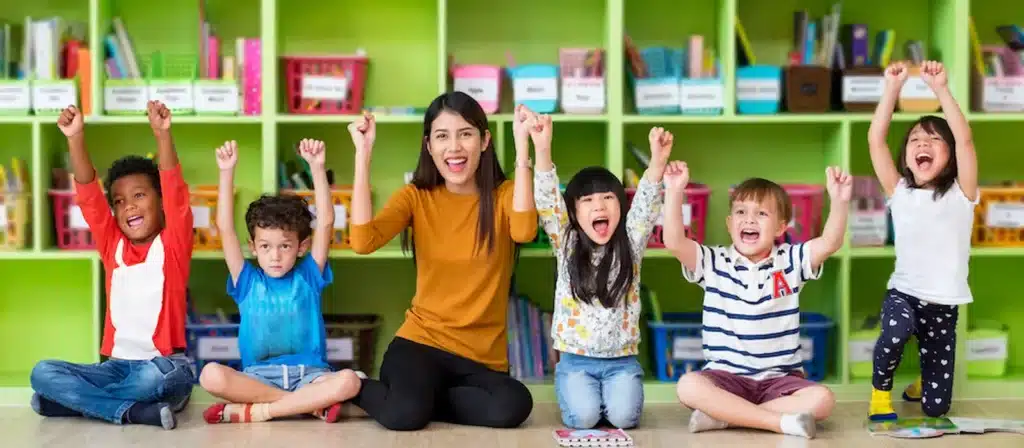
5. Ensure Objectives Are Age-Appropriate
An effective preschool objective respects children’s developmental stages. For example, asking a three-year-old to write full sentences is unrealistic, but asking them to draw a picture and describe it is not.
Use developmental milestones as a guide and adjust for individual variation, remembering that growth in preschool is not linear.
6. Incorporate Flexibility
Children vary in how they reach developmental milestones. Objectives should be flexible enough to adapt to individual learning styles and needs.
For instance, if the objective is to “describe three emotions,” the Child might do this through drawing, acting, or verbalizing—each approach is valid as long as the goal is met.
7. Make It Observable in Everyday Activities
Great objectives are embedded into daily routines and activities. Children should be able to demonstrate them during play, storytime, or snack preparation—not only during “instructional time.”
This approach reduces pressure and creates a more holistic, natural learning environment.
8. Review and Refine Regularly
Preschoolers grow quickly. An objective that was appropriate in September may be too easy or too advanced by January. Continuously reassess your objectives based on observation and developmental growth.
This cyclical review ensures your objectives remain relevant and challenging.

How Can Educators Achieve Preschool Learning Objectives?
Achieving preschool learning objectives isn’t about checking boxes but crafting meaningful, engaging experiences that align with developmental needs. Educators begin by thoroughly understanding the goals across all cognitive, emotional, physical, and linguistic domains and planning lessons that allow children to reach them naturally through exploration and interaction.
Key strategies include:
- Intentional Lesson Planning: Educators break down each learning objective into weekly or daily tasks, ensuring that classroom routines, centers, and transitions contribute to these goals.
- Individualized Instruction: Not all children progress at the same rate. Teachers must differentiate tasks and offer additional support or challenges based on each child’s developmental level.
- Embedding Objectives in Play: Children learn best when they’re engaged. Educators promote skill development by integrating objectives into play-based activities without diminishing joy or creativity.
- Continuous Observation: Teachers use checklists, anecdotal notes, and portfolios to monitor children’s growth and adjust instruction as needed.
- Professional Development: Staying informed about early childhood education trends and tools allows educators to refine their approach to achieving objectives.
- Use Classroom Environments as Teaching Tools: Learning spaces must be intentional. Defined areas for reading, building, art, and quiet reflection encourage autonomy and self-directed exploration while supporting specific learning goals.
What Are the Criteria for Success?
Measuring success in preschool doesn’t involve tests or grades. Instead, it relies on observable behaviors, developmental benchmarks, and individual progress. Criteria for success include:
- Developmental Appropriateness: Goals should be met within the expected age range for preschoolers.
- Consistency: Skills are demonstrated across settings and with various people.
- Independence: Children achieve objectives with minimal prompting or assistance.
- Comprehension: Children understand what they’re doing, not just repeating a task.
- Social Integration: Skills are used in collaborative or social contexts, enhancing community learning.
Preschool Learning Objectives for Different Age Groups
| Developmental Domain | 2–3 Years | 3–4 Years | 4–5 Years | 5+ Years (Kindergarten Readiness) |
|---|---|---|---|---|
| Language Development | Use 2- to 3-word phrases to express needs | Follow two-step directions and ask simple questions | Identify 10+ letters and their sounds | Begin sounding out CVC words like “cat” or “sun” |
| Literacy | Enjoy being read to and pretend to read books | Recognize their name and some letters | Understand print directionality; match letters to sounds | Read simple words and start basic sentence writing |
| Mathematics | Match basic shapes and count to 3 | Count to 10; sort objects by one attribute | Count to 20 and compare quantities | Write numbers to 10 and perform simple addition |
| Social-Emotional Skills | Engage in parallel play; begin expressing emotions | Play cooperatively and name feelings | Take turns; resolve conflicts using words | Follow group rules; display empathy and cooperation |
| Cognitive Development | Match colors and simple objects | Complete 5- to 10-piece puzzles; identify patterns | Ask “why” questions; use logical reasoning | Plan and execute multi-step projects or play scenarios |
| Motor Skills | Stack blocks; scribble with crayons | Hold writing tools with more control | Cut along lines; draw shapes | Write letters; manipulate small objects with precision |
| Self-Care & Hygiene | Show interest in toilet training | Wash hands with reminders; assist in dressing | Dress and undress with minimal help | Brush teeth, zip jackets, and manage personal hygiene independently |
| Science Exploration | Explore objects using senses | Ask simple science-related questions | Make predictions; describe findings | Record observations and compare results with peers |
| Creative Expression | Participate in music and free drawing | Use dramatic play to express ideas | Create structured stories and imaginative play scenarios | Combine storytelling, art, and music in multi-sensory projects |
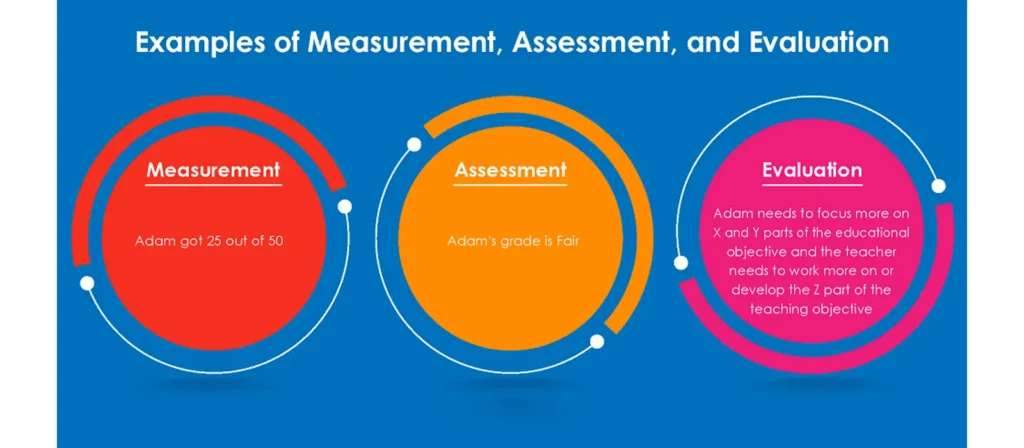
Assessment and Evaluation of Preschool Learning Objectives
Assessment in preschool isn’t about tests—it’s about understanding how each child grows over time. Evaluation of preschool learning objectives must be both formal and informal, woven into daily activities without disrupting the natural learning process.
Observational Assessment
Teachers observe children throughout the day, noting behaviors that align with specific learning goals. Tools used include:
- Anecdotal records: Short, factual notes that capture specific objectives-related incidents.
- Checklists: Used to track progress across a list of age-appropriate skills.
- Running records: More detailed observations taken over a short period, often used for targeted skills.
Work Samples
Collected drawings, writings, and projects reveal cognitive, language, and motor development. By regularly compiling these samples in portfolios, educators gain a visual timeline of growth and mastery over time.
Child Self-Assessments
Even preschoolers can reflect on their learning. Teachers might use smiley-face charts or ask simple questions like, “What did you enjoy doing today?” to encourage self-awareness and ownership of progress.
Family Input
Parents provide insights into behaviors at home that may not be visible in class. This information adds depth to the evaluation and can highlight skills that emerge in different environments.
Progress Reports and Conferences
Quarterly reports or parent-teacher meetings offer opportunities to share progress toward objectives. Visual aids, portfolios, and documentation help make these discussions concrete and collaborative.
- Formative assessment is ongoing and used to adjust teaching in real time.
- Summative assessment evaluates whether learning objectives have been met at the end of a unit or term.
This holistic, child-centered approach ensures evaluations reflect real growth rather than isolated performances.
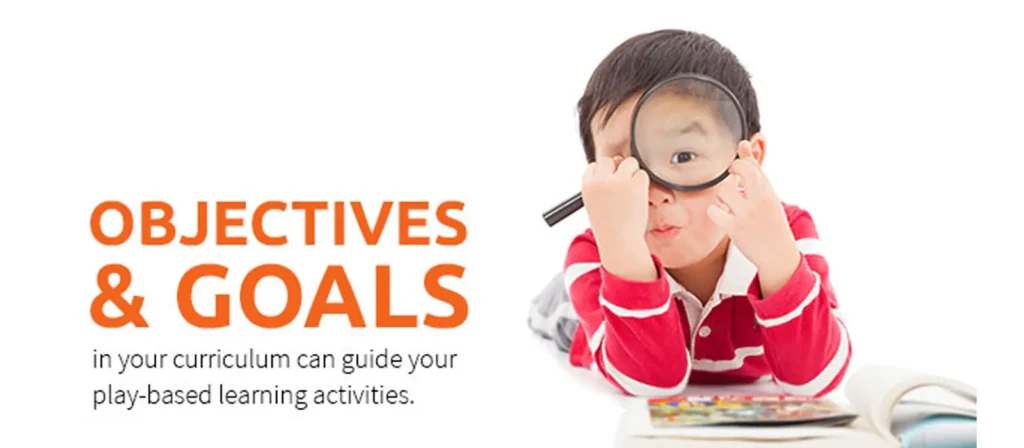
Incorporating Play-Based Learning into Goals
Play is not a break from learning—it is learning. When educators intentionally incorporate learning objectives into play-based experiences, children gain knowledge while engaging their curiosity, creativity, and social instincts.
Strategies to do this include:
- Thematic Centers: Set up stations with specific goals (e.g., a grocery store for math, a doctor’s office for science).
- Guided Play: Allow freedom within a framework. For example, provide props for storytelling to support literacy.
- Observation and Redirection: Step in during play to extend conversations or prompt new thinking aligned with objectives.
- Free Play with Purpose: Even unstructured play supports objectives when teachers remain aware of emerging skills to encourage or challenge.
Play allows for deep engagement, persistence, and real-world application of skills—all critical to developmental success.
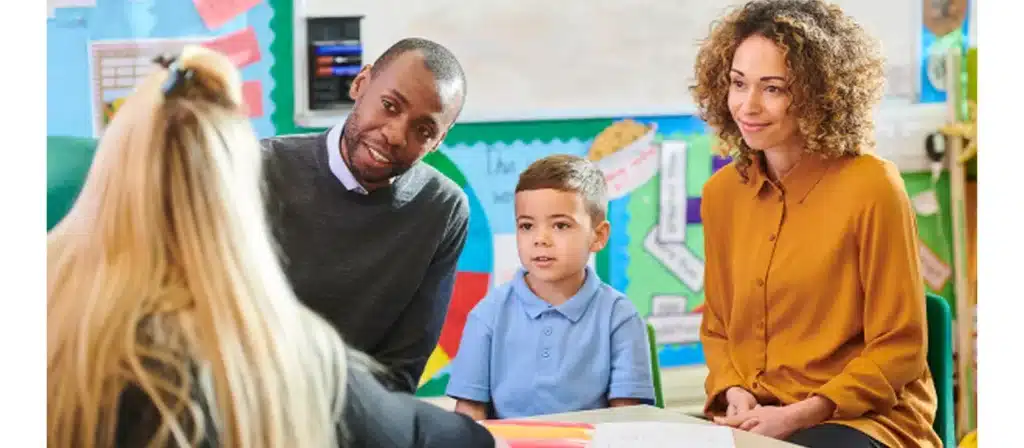
Involve Parents in the Development of Preschool Learning Objectives
Parent involvement amplifies the effectiveness of learning objectives. When families understand and support classroom goals, children benefit from consistency and reinforcement at home.
Communicate Clearly and Regularly
Send home newsletters or updates explaining what skills are targeted in class. Use clear language and offer examples of how these skills can be supported at home.
Offer Home Activities Aligned with Objectives
Provide simple, engaging tasks that mirror classroom goals, such as:
- Counting objects during a grocery trip
- Naming letters on road signs
- Practicing self-care skills during bedtime routines
Host Learning Workshops
Invite parents to participate in classroom activities or workshops on child development, behavior management, or early literacy. These foster trust and equip families with useful strategies.
Create Collaborative Learning Plans
When a child needs support in a specific area, work with families to create shared goals. This can include personalized strategies for language development, behavior, or motor skills.
Use Technology for Communication
Apps and platforms allow for photo sharing, updates, and quick messages between school and home. Parents feel more involved when they see real-time evidence of their child’s progress.
FAQs
- What are the most important preschool learning objectives?
Core objectives include cognitive development, language and literacy, physical skills, social-emotional growth, and creativity. These are foundational for overall child development. - Are preschool learning objectives the same everywhere?
No, they vary by curriculum, educational philosophy, and regional or national standards, though many share common domains like language, math, and social skills. - Can preschool learning objectives be customized?
Absolutely. Teachers can adapt goals to suit individual learning needs, cultural backgrounds, or developmental variations. - What should I include in a preschool learning objective?
Use clear, action-based verbs, ensure the goal is measurable, make it developmentally appropriate, and align it with curriculum standards or developmental milestones. - Can preschool learning objectives be adapted for special needs?
Yes. Objectives should be flexible and inclusive, allowing for Individualized Education Plans (IEPs) to address specific developmental, physical, or language needs. - How often should preschool objectives be updated?
They should be reviewed regularly—monthly or quarterly—to reflect progress, emerging interests, or changing developmental needs. - What’s the biggest mistake in writing preschool learning objectives?
Being too vague or ambitious. Objectives should be specific, achievable, and developmentally appropriate. - Can preschool objectives include life skills?
Absolutely. Life skills such as washing hands, putting on a coat, or expressing needs clearly are vital learning objectives.
Conclusion
Preschool learning objectives are not arbitrary—they are powerful tools that shape a child’s first formal educational experience. When crafted carefully and implemented thoughtfully, they nurture curiosity, confidence, and competence.
By addressing all developmental domains, aligning with standards, and adapting to individual needs, preschool learning objectives prepare children not just for school, but for life.

